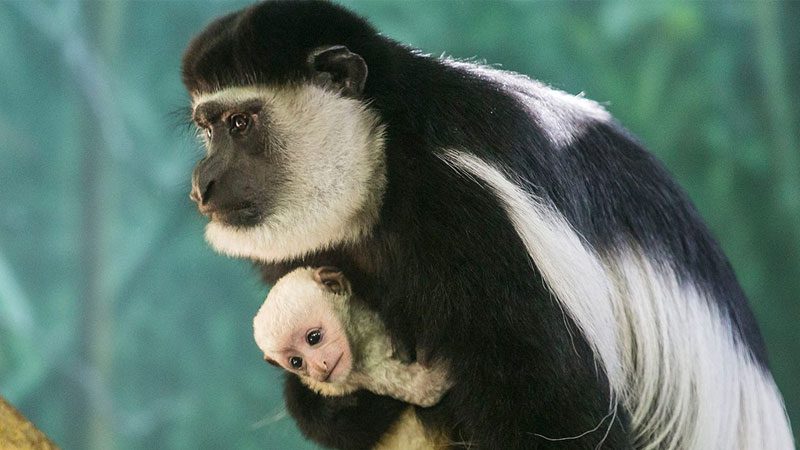Welcome to Lincoln Park Zoo’s new web app! Share your feedback

Black-and-white Colobus Monkey
Helen Brach Primate House
Helen Brach Primate House is open 10 a.m.-4:30 p.m. Monday through Friday and 10 a.m.-6:30 p.m. Saturdays and Sundays.
Did You Know?
- These monkeys have digestive systems that are specially adapted for a leaf-heavy diet.
- The long fur on their back may have a parachute-like effect, allowing them to leap horizontally without too much of a vertical drop.
- Newborn colobus monkeys are pure white.
Don’t See the Animals?
Why aren’t animals visible at all times? To promote positive animal welfare, we provide animals with choices. They can choose to spend time in areas that are out of public view.

Take an Animal Home with You
Overview
Scientific Name: Colobus guereza
Class: Mammals
Diet: Leaves (also, fruit and flowers)
Range: Central Africa
Endangered Status: Least Concern
More Information
Black-and-white colobus monkeys have glossy coats with a U-shaped mantle of white fur on their back, which is much longer than the rest of their coat. They also have white fur surrounding their black face and whitish outer thighs and tails. Their tails can get up to 35 inches long and are generally longer than their bodies, which measure 18–28 inches.
These monkeys live in small, highly cohesive family groups of up to 15 individuals. They usually consist of a male, multiple females, and their offspring. They have a gestation of four to six months and can give birth to one infant every 20 months or so. They reach maturity at age 6 for males and 4 for females.
